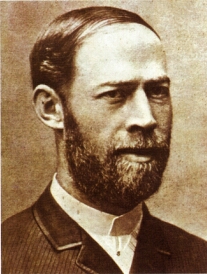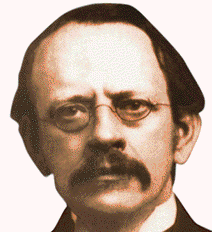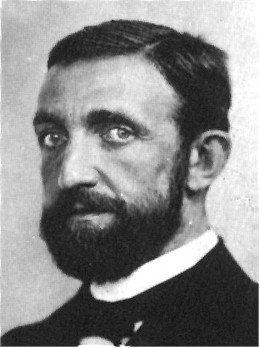|
|

|
Early Experimenters
|
The first physicists to observe the photoelectric effect
 |
The first recorded observation of the photoelectric effect was by Heinrich Hertz in 1887 when he was investigating the production and reception of electromagnetic (EM) waves. His receiver consisted of a coil with a spark gap. The spark gap is a void between a positive and negative terminal that has a hig voltage between them. If a wave of electromagnetic energy passed through the gap the obersver would see a spark of electricity. Hertz placed the apparatus in a darkened box in order to see the spark better; he observed, however, that the maximum spark length was reduced when in the box. The glass panel placed between the source of EM,elecromagnetic, waves and the receiver absorbed ultraviolet radiation that assisted the electrons in jumping across the gap. When removed, the spark length would increase. From this he qas able to determine that radiation had properties reminiscint of light. Hertz concluded his months of investigation and reported the results obtained. He did not further pursue investigation of this effect, nor did he make any attempt at explaining how the observed phenomenon was brought about.
|
 |
In 1899 Joseph John Thomson studied the effects of ultraviolet light in a
cathode tube. He proposed that the radiation of negatively charged particles, which he called corpuscles and today we call electrons. In his experiment, Thomson enclosed a metal plate, cathode, in a vacuum tube, and exposed it to high frequency radiation. After the radiation reached a certain amplitude, he noticed corpuscle was emitted, and current was produced. The magnitude and speed of this current varied with the intensity and color of the radiation that was applied to the cathode. The greater the radiation intensity or frequency of the field, the greater the current prduced.
|
 |
In 1902 Philipp von Lenard observed the changes in electron energy with respect to the change in light intensity. He used a very powerful light source so that he could see note all the changes brought about by varying the intensity of the light. Lenard's experiment focused on the energy required to stop the electrons called the stopping potential. He found that the calculated maximum electron energy is determined by the frequency of the light applied. An increase in frequency results in an increase in the maximum energy calculated for an electron leaving the cathode. As an example ultraviolet radiation would require a higher applied stopping potential than blue light. This is because the frecuency of ultraviolet light is higher than the frequency of blue light.
|
|
|












